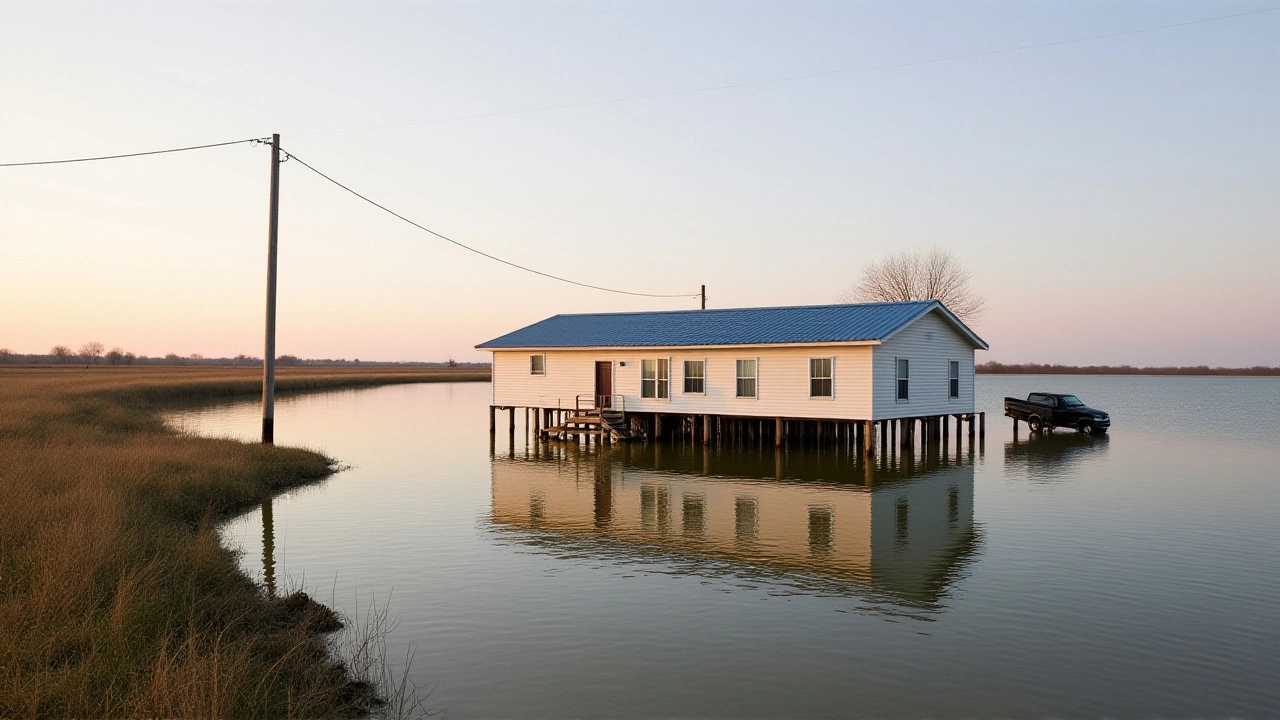When Iowa Climate Statement released its 15th annual warning on November 10, 2025, it wasn’t just another academic report—it was a financial alarm bell ringing across farm fields and suburban rooftops. For the first time, the statement zeroed in on the skyrocketing cost of home and farm insurance, linking it directly to the state’s worsening climate chaos. Nearly 180 researchers from 26 Iowa colleges and universities signed on, including Peter Thorne, an environmental health professor at the University of Iowa, and David Courard-Hauri from Drake University. Their message? Climate change isn’t a distant threat. It’s already rewriting Iowa’s economic rules—and the state’s leaders are refusing to read the fine print.
Why Insurance Premiums Are Skyrocketing
The numbers don’t lie. Over the past 40 years, billion-dollar weather disasters in the Midwest—including Iowa—have more than doubled, according to the statement. Adjusted for inflation, that’s not just more storms. It’s more claims. More payouts. More insurers pulling out of high-risk counties. Martin Grace, a business and insurance expert, explained how insurers now use climate models to map risk: areas that saw three major floods in the last decade are being priced out of coverage entirely. "They’re not being cruel," Grace said. "They’re being mathematically honest. And that honesty is leaving families behind."
For rural Iowans, the impact is brutal. Chad Hart, an economist at Iowa State University, found that farm insurance premiums have jumped 47% since 2019. That’s not just a line item—it’s a threat to the state’s $50 billion agricultural economy. Farmers who can’t afford coverage risk losing everything in one bad storm. "We’re not talking about droughts anymore," Hart said. "We’re talking about losing your entire crop, your equipment, your home—and no one will pay you back."
The Funding That Was Turned Down
Here’s the twist: Iowa had a chance to fix this. In 2023, the federal government offered Iowa a $3 million grant to develop a climate resilience plan—money that could have funded solar incentives, flood-resistant infrastructure, and job training in clean energy. Governor Kim Reynolds turned it down. "Too many strings," she said. But the strings were simple: report on emissions, create green jobs, protect public health. The state didn’t have to spend a dime of its own money. It just had to act.
That refusal echoes louder than any storm. It mirrors former President Donald Trump’s 2018 claim that climate change is "the greatest con job ever perpetrated on the world." But while politicians debate semantics, the data keeps piling up. The Environmental Health Sciences Research Center at the University of Iowa, which once backed the Climate Statement with federal funds, announced in 2025 it was pulling its support. Not because the science was flawed—but because the political will to act had vanished.
What’s Happening on the Ground
It’s not just about premiums. It’s about soil. Water. Livelihoods.
The 2025 statement details how heavier rainfall—up 30% since 2000—is washing away topsoil, clogging tile drainage systems, and leaching nitrogen into rivers. That means poorer crop yields, more algal blooms in the Mississippi, and higher water treatment costs. Pests like the corn earworm and soybean aphid are spreading north faster than ever, thanks to milder winters. Farmers who once relied on predictable seasons now face a new reality: one year flooded, the next parched, and the one after that hit by a derecho.
"We used to plan harvests around the calendar," said a third-generation farmer from Story County, who asked not to be named. "Now we plan them around the weather app. And half the time, it’s wrong."

Why the Silence from State Leaders?
Media coverage has been consistent. The Des Moines Register, Cedar Rapids Gazette, Iowa Public Radio, and others have run headlines like: "Climate change is driving up insurance costs for Iowa homes, farms, scientists say." But editorial pages are where the frustration boils over. The Gazette’s 2025 editorial captured the absurdity: "Each year, Iowa news outlets cover the statement. Republican leaders say, 'What, me worry?'
The pattern is clear: science is presented. Evidence is undeniable. Political response? Silence. Deflection. Dismissal. Even when the University of Iowa’s own College of Public Health warns of increased heat-related deaths and respiratory illnesses from worsening air quality, the response remains unchanged: no hearings, no policy shifts, no funding.
What Comes Next?
Experts say the only real solution is legislation. "Individual actions help," said Stapleton, a researcher referenced in the statement. "But if you want to reduce liability for insurers, lower premiums for families, and protect our farms—you need laws. You need state-level mandates on emissions, building codes, and land use."
That’s why scientists are urging Iowans to call their legislators. To show up at town halls. To make climate risk a voting issue. Because right now, the market is responding to climate change. The state isn’t.

Behind the Numbers: A Timeline of Ignored Warnings
- 2011: First Iowa Climate Statement warns of policy gaps in climate science communication.
- 2012: Focus on the historic drought that cost farmers $3.2 billion.
- 2018: Warns buildings must be redesigned for future climate conditions.
- 2020: After the derecho that knocked out power for 500,000, calls for grid modernization.
- 2023: Urges solar energy adoption; ignored by state legislature.
- 2025: Insurance costs spike as disasters double; federal grant rejected.
Each year, the message evolved. Each year, the stakes rose. Each year, the response stayed the same.
Frequently Asked Questions
How are rising insurance costs affecting Iowa farmers specifically?
Farmers in Iowa are seeing premiums rise 47% since 2019, with some rural policies now costing over $5,000 annually for crop and property coverage. Many are dropping coverage entirely, leaving them vulnerable to total loss from floods or hail. Without insurance, banks won’t lend for equipment or seed, crippling the agricultural supply chain that supports 20% of Iowa’s economy.
Why did the University of Iowa stop funding the Climate Statement?
The Environmental Health Sciences Research Center pulled its federal funding in 2025 not because the science was weak, but because state leaders refused to act on its findings. Without political buy-in, federal agencies saw the funding as ineffective. The statement was still published, but without institutional backing, its reach is now limited to academic circles and media.
What policies do the scientists recommend?
The 2025 statement urges Iowa to enforce soil and water protection laws, update building codes for flood resilience, require climate risk disclosures for property sales, and direct state health departments to track heat-related illnesses and air pollution spikes. Most critically, they call for legislation to cap greenhouse gas emissions from agriculture and industry—something no Iowa law currently does.
Has any state in the Midwest responded to similar warnings?
Yes. Minnesota passed a $1.2 billion climate resilience bill in 2024, funding flood barriers and farm conservation programs. Illinois created a climate risk disclosure law for property sales in 2023. Both states saw insurance premiums stabilize or decline in targeted counties. Iowa’s refusal to act is now an outlier—not just politically, but economically.
Is there any hope for change in Iowa?
Change is possible—but only if voters make it a priority. Local governments in Iowa City and Ames have adopted climate action plans independently. Community solar co-ops are growing. But without state leadership, these efforts remain fragmented. The next election cycle may be the last chance to align policy with the science before premiums become unaffordable for most rural families.
What’s the connection between climate change and public health in Iowa?
The University of Iowa College of Public Health links rising temperatures to increased asthma cases from ozone pollution, heatstroke deaths among elderly farmworkers, and waterborne illnesses from flooded sewage systems. In 2024 alone, emergency room visits for heat-related illness jumped 31% in central Iowa. These aren’t abstract risks—they’re hospital bills and lost wages.
